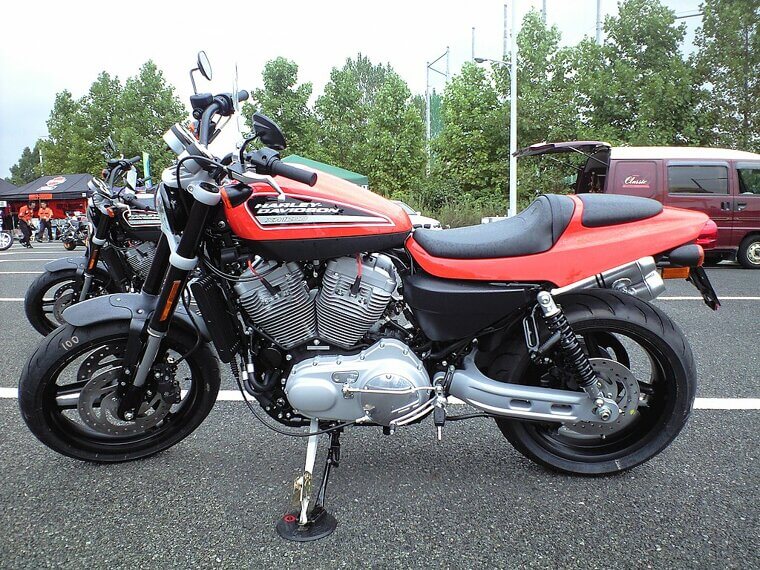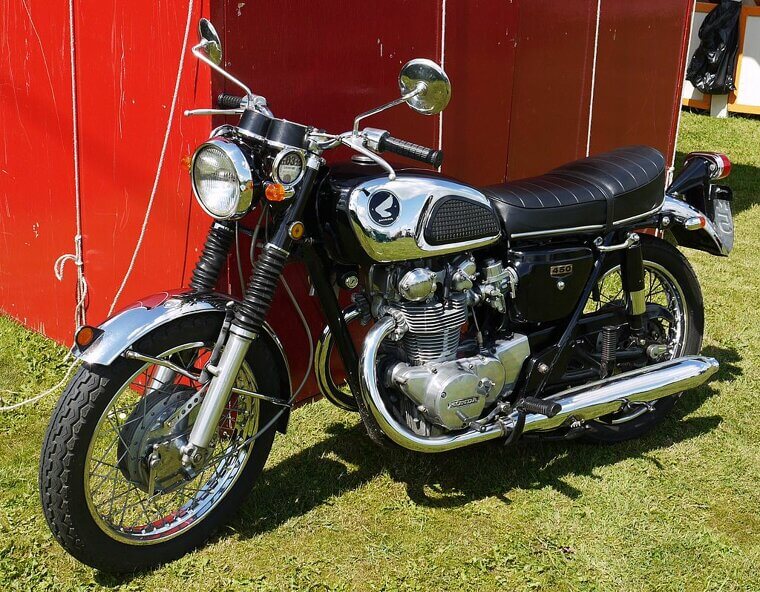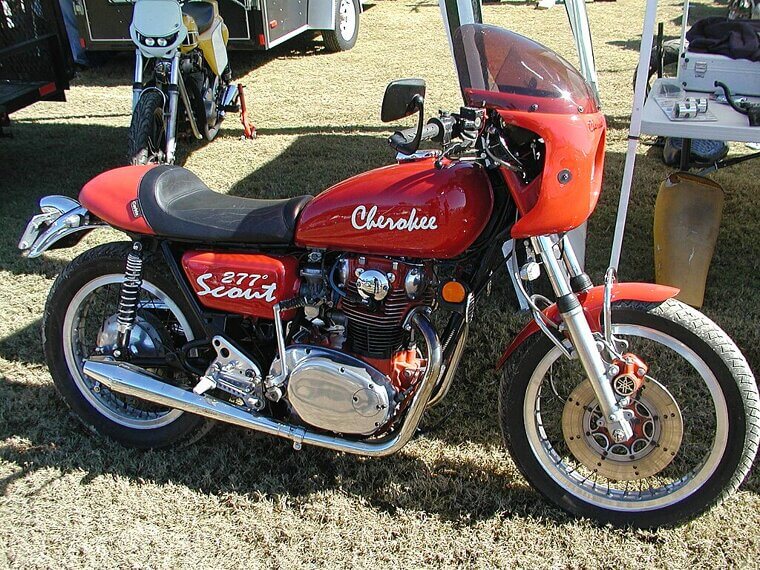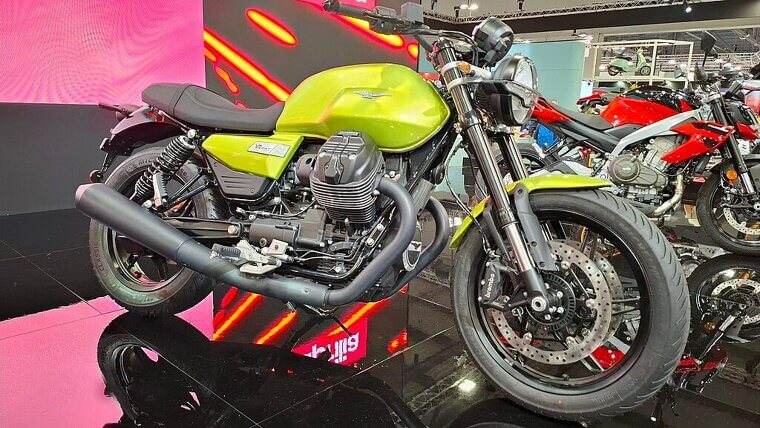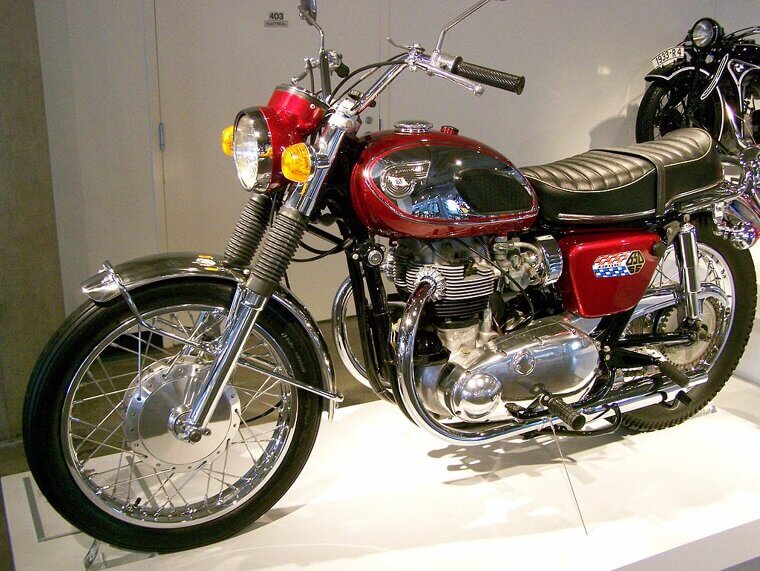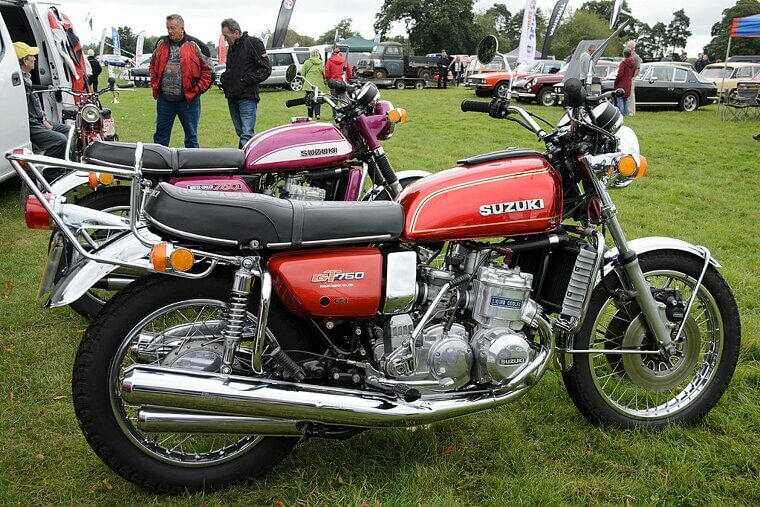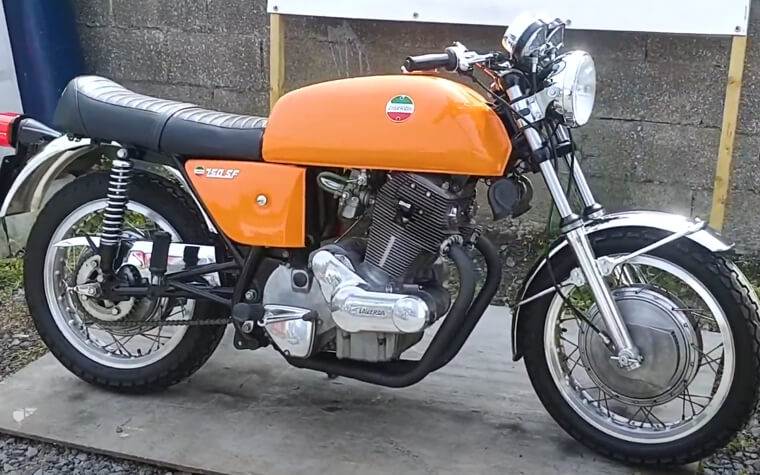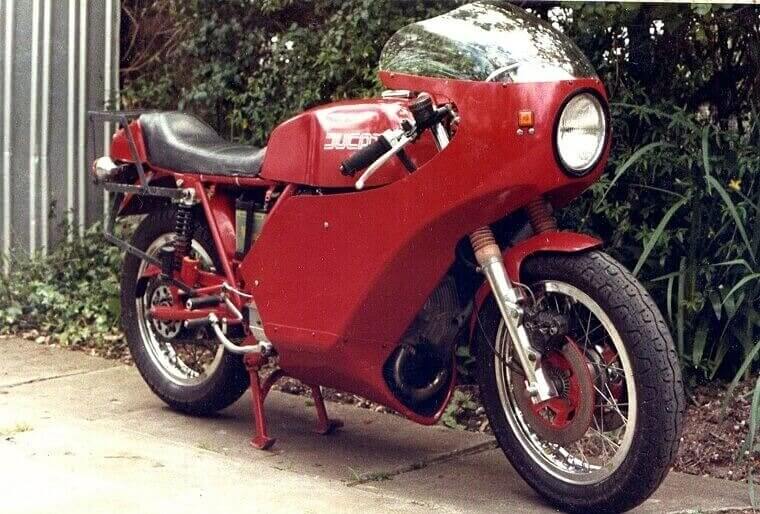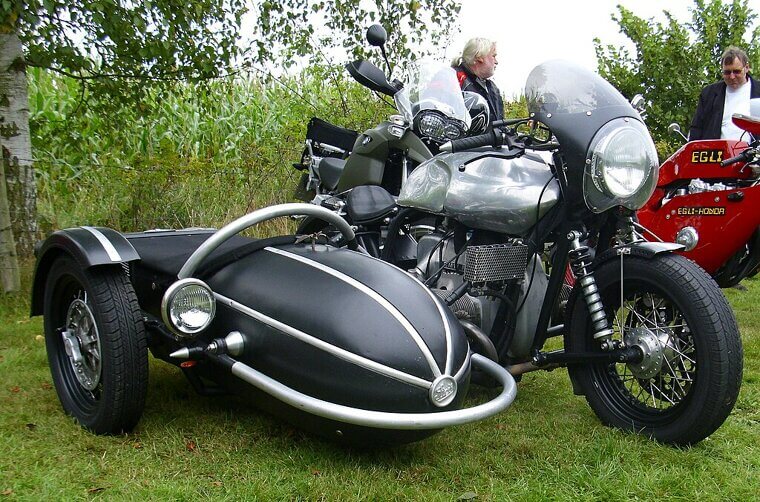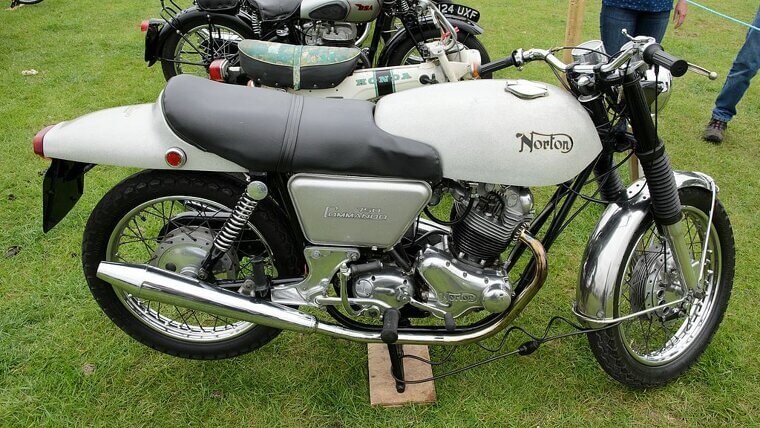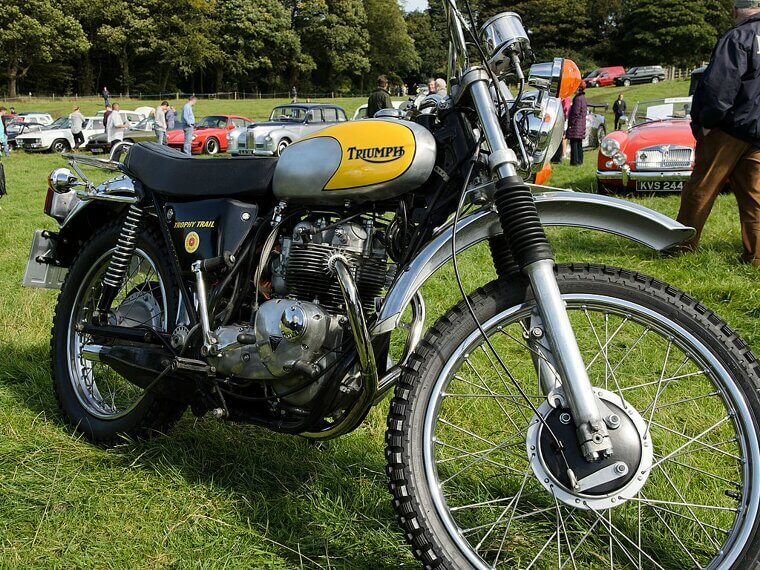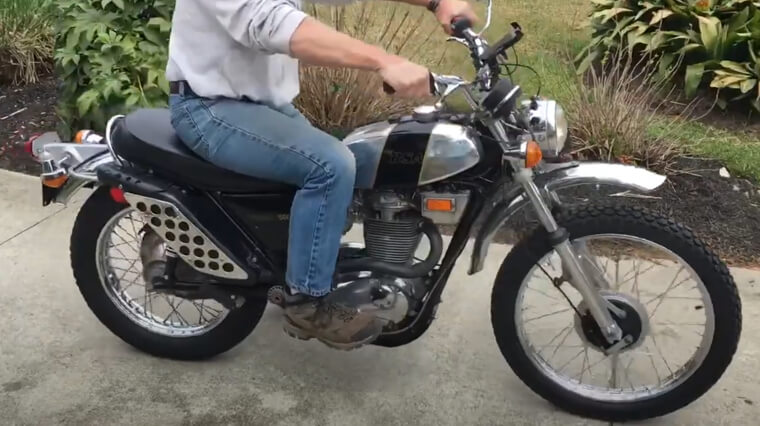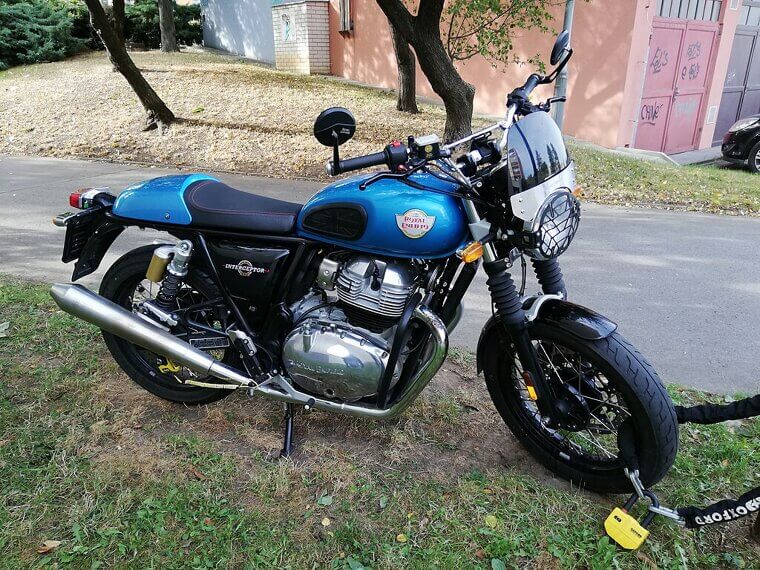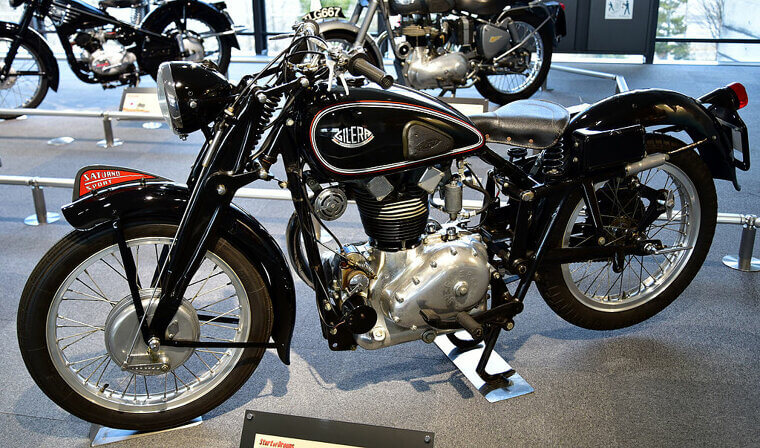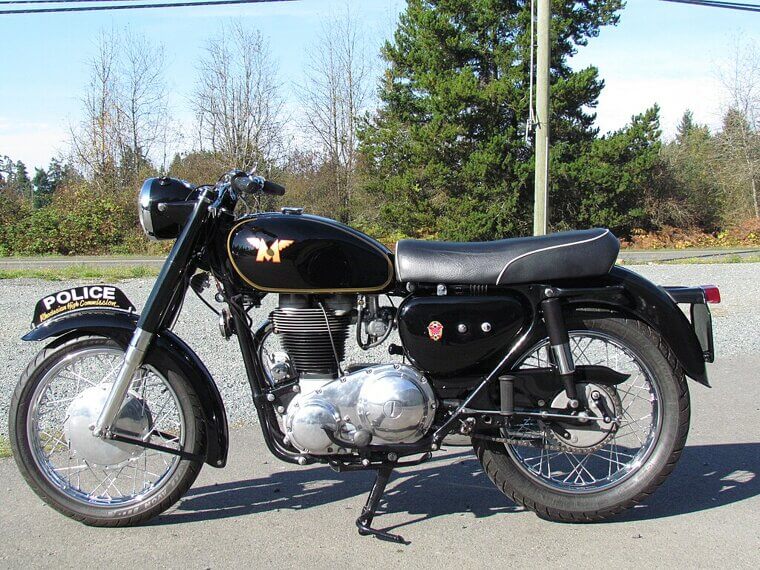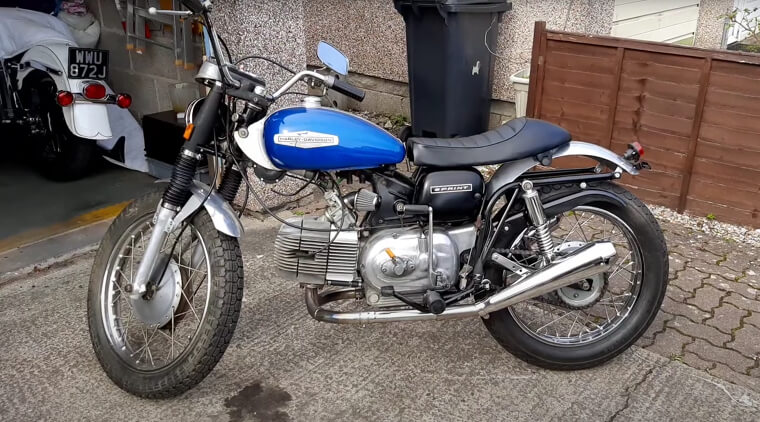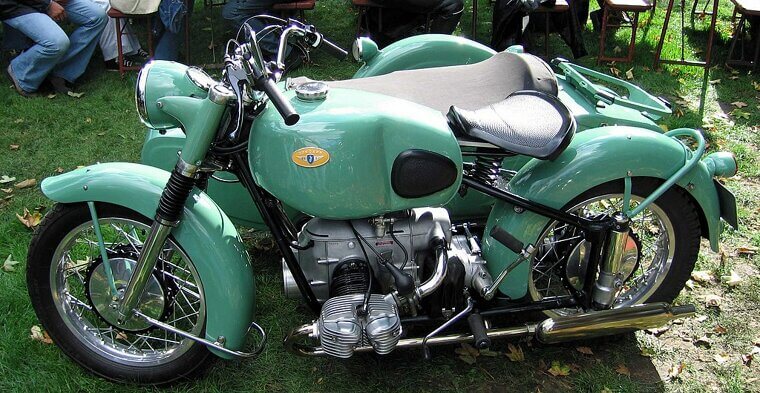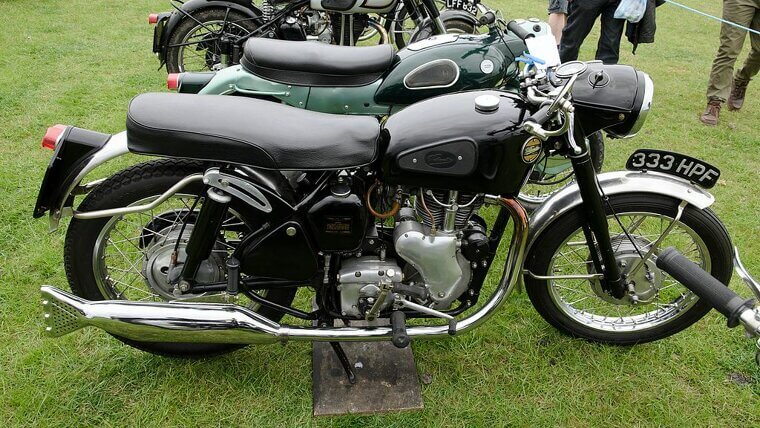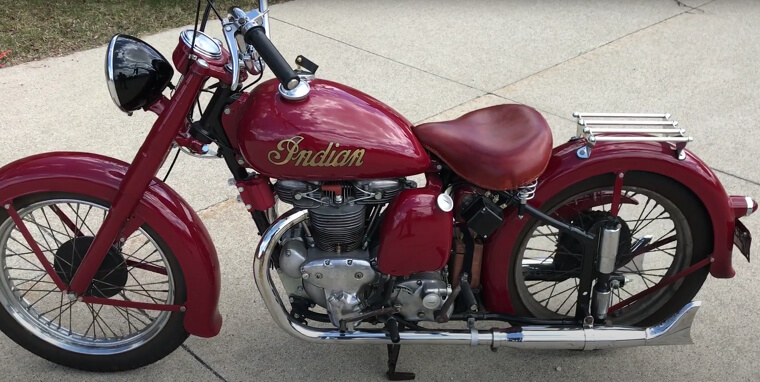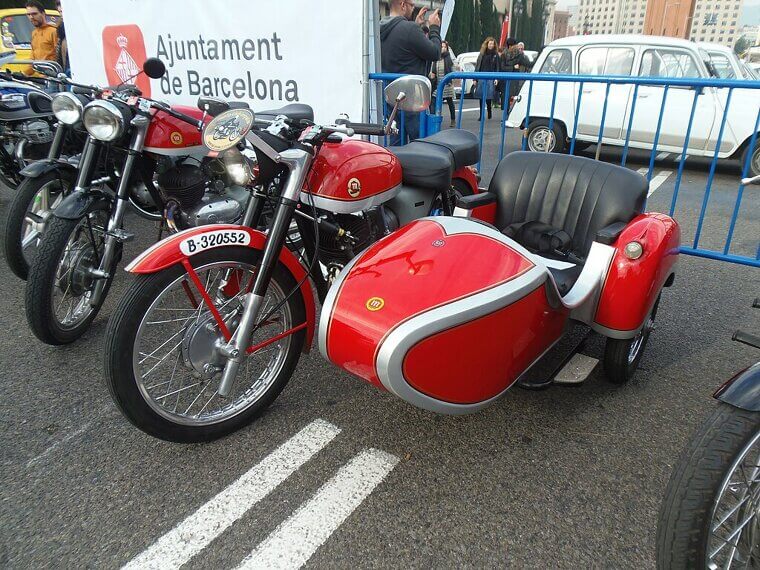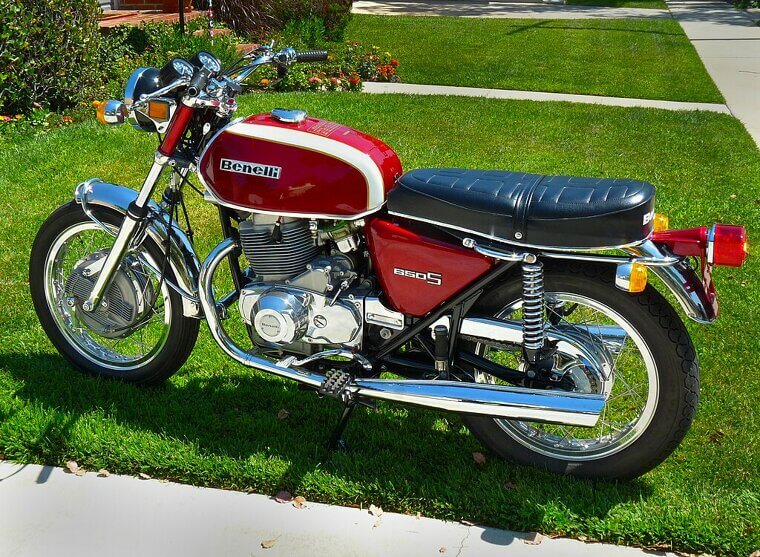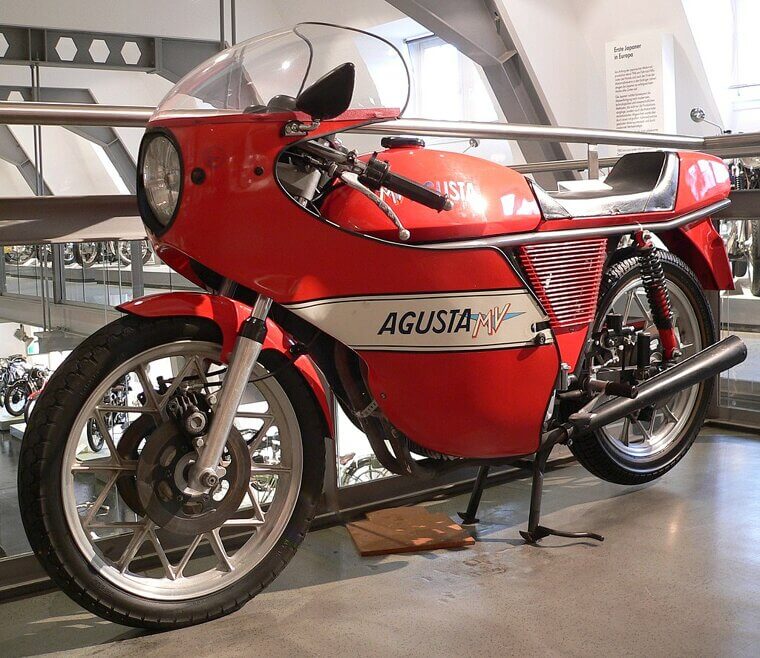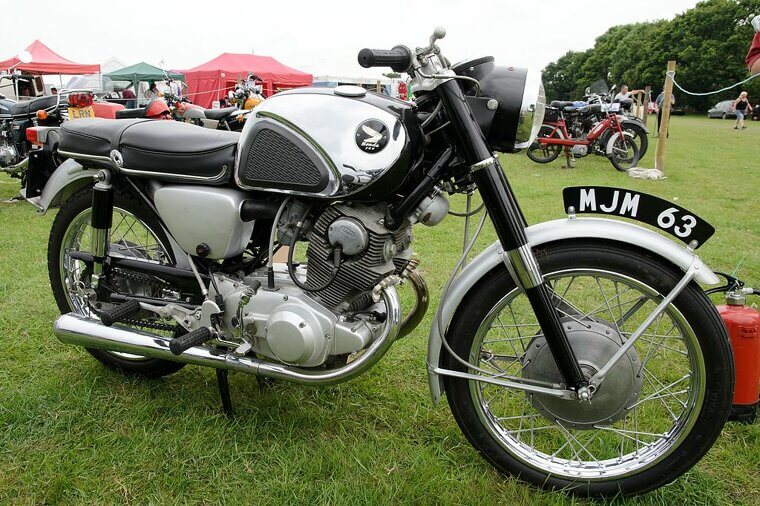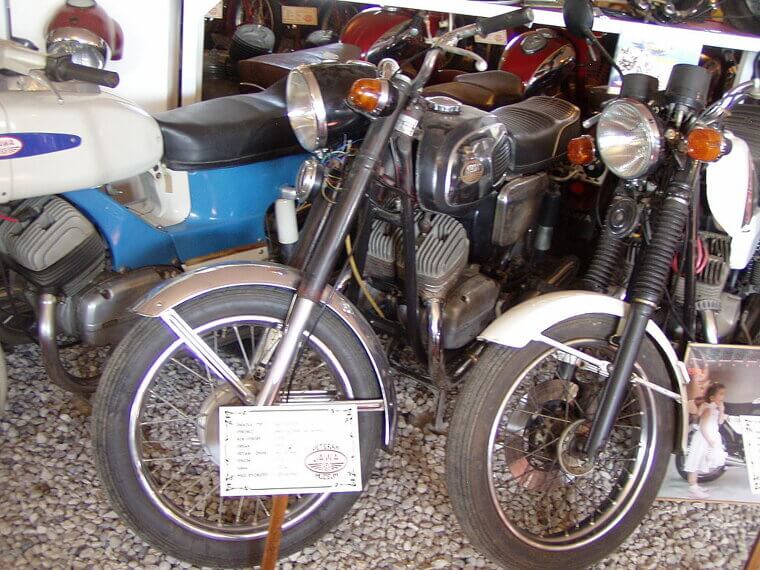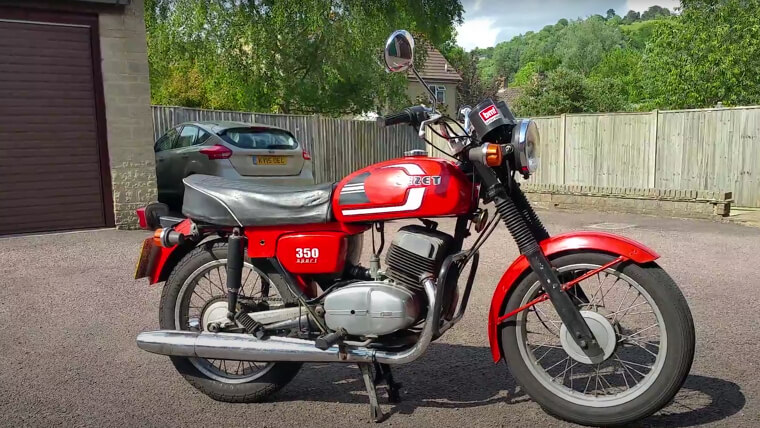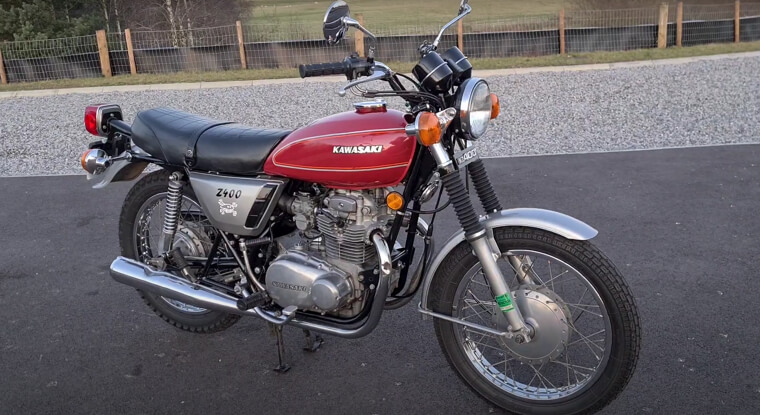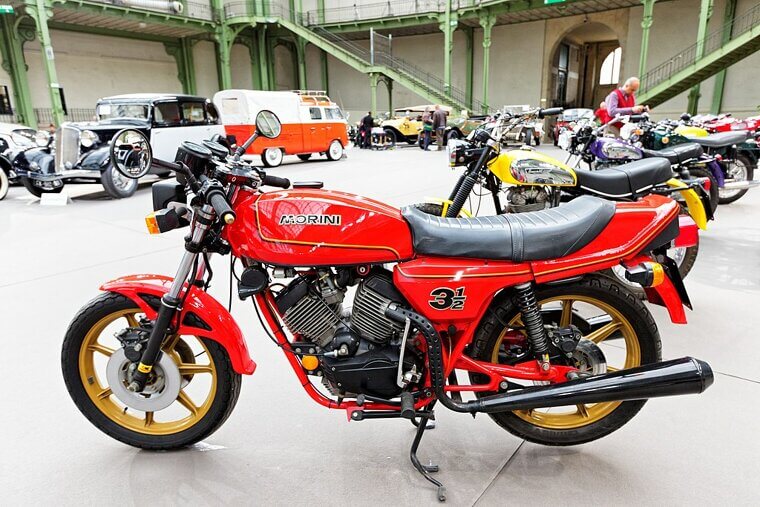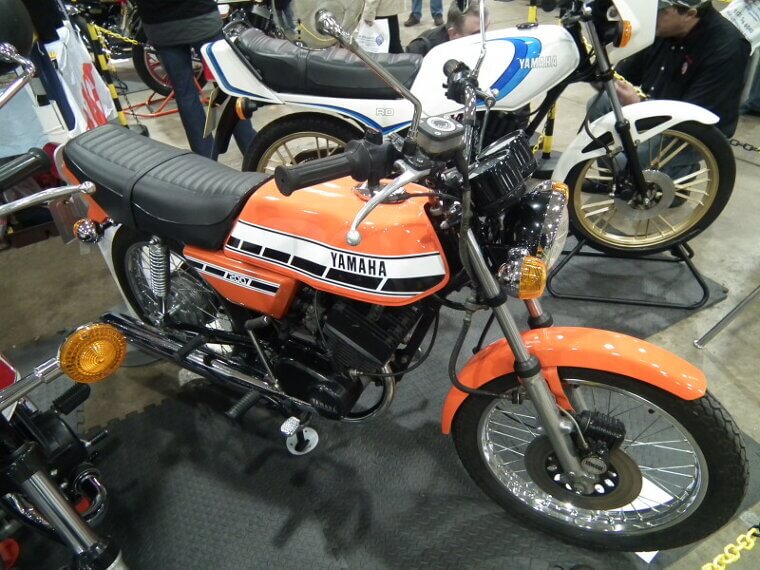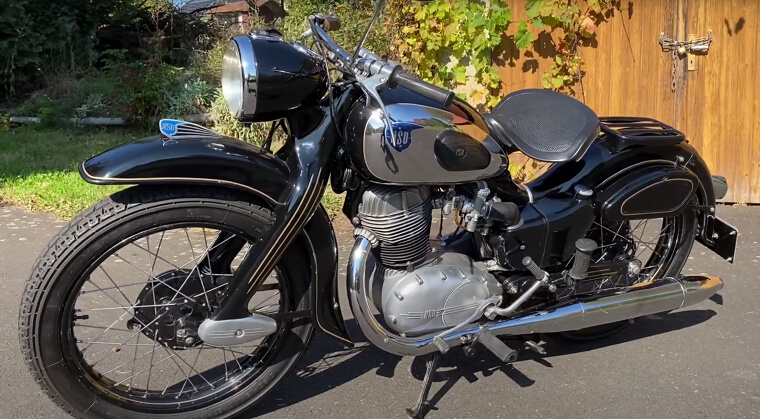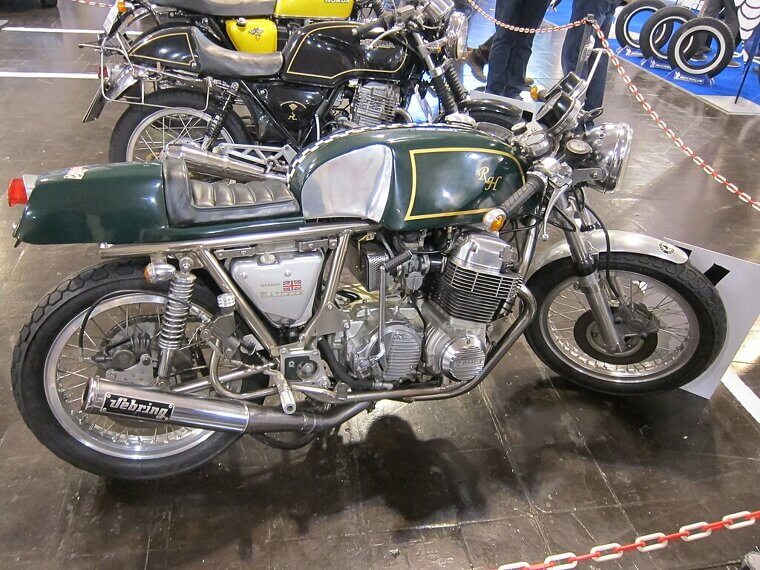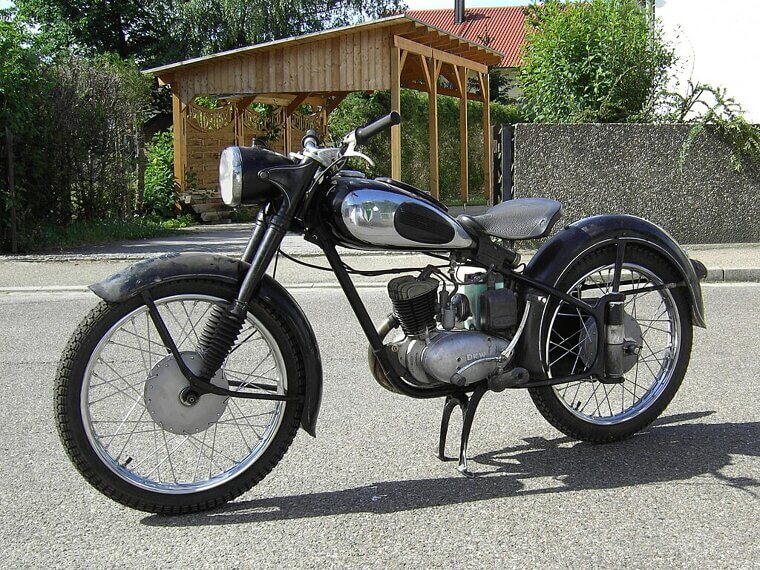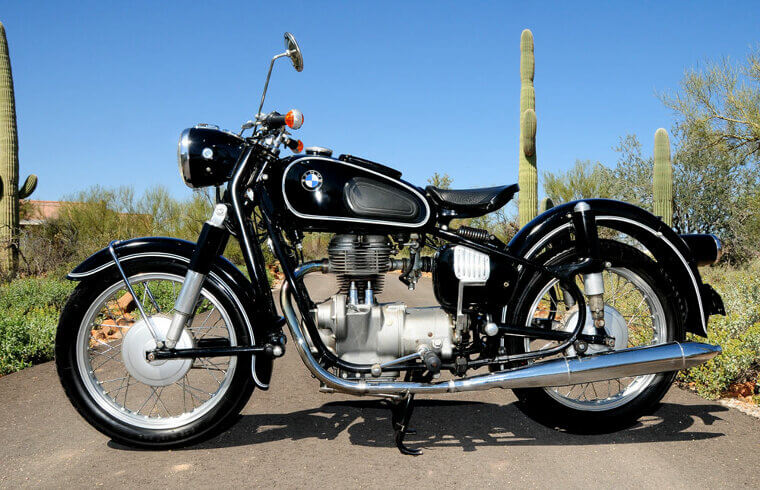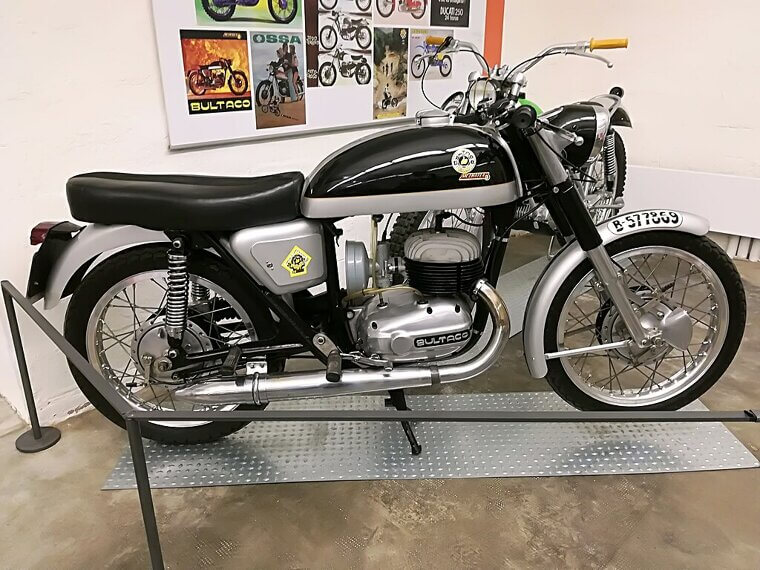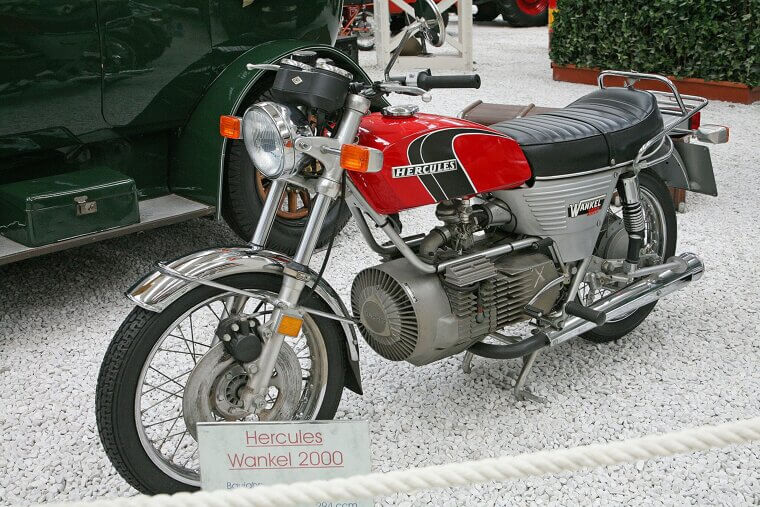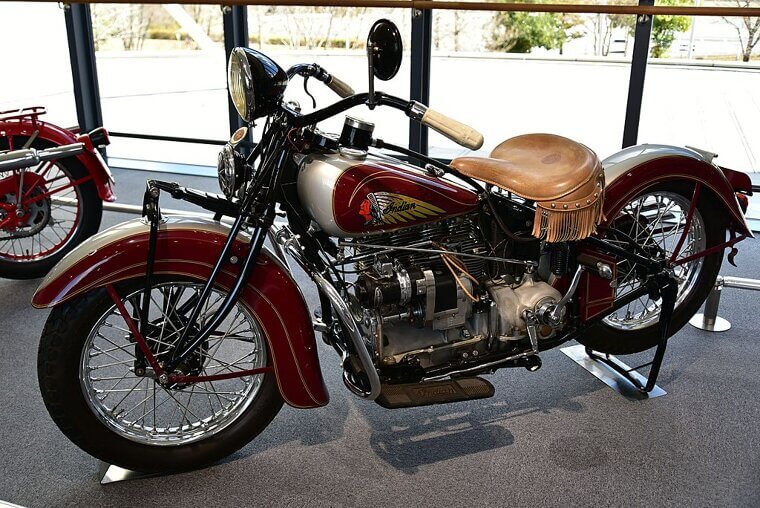Harley-Davidson XR1000 (1983–1984)
The XR1000 was dressed like a street bike but was all racer underneath, and Harley-Davidson only made a limited number so few people even knew they existed! The bulkier rides claimed the rest of the attention, leaving the XR1000 standing alone with its large price tag.
Honda CB450 "Black Bomber" (1965–1974)
Despite being the first production bike to feature the double overhead camshaft (DOHC) engine, Honda’s Black Bomber wasn’t very popular. It was ahead of its time and outperformed many popular British bikes, but it lacked the “macho” aesthetic and the brand had yet to earn favor.
Yamaha XS650 (1969–1985)
Although it earned a cult following eventually, the XS650 was considered a Japanese copy of British bikes. And it was… but that doesn’t make it bad. In fact, Yamaha improved on them with a more reliable 650cc parallel twin engine, and it offered unmatched customization for its day.
Moto Guzzi V7 Sport (1971–1974)
The V7 Sport brought expensive Italian quirkiness to the table and a winged silhouette that came courtesy of its transverse V-twin engine. It was too niche though; few riders had heard of Guzzi, and it lacked the bombastic nature of its competitors, so riders missed out.
Kawasaki W1 650 (1966–1971)
Kawasaki created the W1 650 in a time when licensing rules were less clear, and they legally copied a BSA design. Obviously it was seen as a cheap imitation, but it was actually far more reliable than its British equivalents, and a smoother ride, too.
Suzuki GT750 "Water Buffalo" (1971–1977)
When most big bikes were air-cooled, Suzuki brought out the GT750, a water-cooled monster nicknamed “Water Buffalo” in the U.S. and “Kettle” in the U.K. Despite running cooler, smoother and for longer than most other bikes, it was unfairly derided for not fitting in.
Laverda SF750 (1970–1976)
The SF750 (SF stands for Super Frenata, or “super braking”) was a beefy Italian bike kept in the marketing shadows by Laverda’s lack of clout outside Europe. It wasn’t as sleek and elegant as other bikes on the market, but it had a bulletproof 750cc parallel twin engine.
Ducati 860 GT (1974–1976)
Renowned car designer Giorgetto Giugiaro was behind the 860 GT and while its V-twin engine and desmodromic valves were performant, its square-tank boxy design was less welcome. Purists judged it on its looks so it didn’t get much attention, but underneath all that the 860 GT was pure heart.
BMW R75/5 (1969–1973)
Nowadays, retro BMWs are beloved but back in the ’70s they were too clean and straight-laced for the rebellious motorbiking crowd. It didn’t scream for attention like the other bikes did; quiet power was an odd concept on the motorcycle market, so riders overlooked it.
Norton Commando 750 Fastback (1967–1973)
The Commando does get its dues, but the Fastback version? Not so much. It was more aerodynamic than its predecessor, and came with a tail hump that was ahead of its time. However, its looks put many people off, while others saw it a stopgap to the Commando 850.
Triumph TR5T Trophy Trail (1973–1974)
British brand Triumph was facing tough economic times when it released the Trophy Trail so it was only in production for two years, and in a time when Japanese dirt bikes were all the rage. It did well in the 173 International Six Days Trial competition, though.
BSA B50 (1971–1973)
Another victim of brand collapse, the B50 was the struggling BSA’s last gasp and Britain’s last great 500cc single thumper. It was super-light and budget-friendly, but very under advertised, so it went down with BSA - fighting all the way.
Royal Enfield Interceptor 750 (Series I & II) (1960–1970)
Royal Enfield is better known for its lawnmower-powered scooters in India, but the interceptor 750 was designed to dominate the American market. It had a 736cc parallel twin engine and throaty growl that scared small children, but reliability issues and brand collapse finished it off.
Gilera Saturno (1946–1958)
Despite being made on a tight budget, the Saturno was sleek, light and agile but its price tag overreached. In a bid to survive in post-war Italy, Gilera aimed high, though it couldn’t compete against its stiff Moto Guzzi (and later Ducati) competition.
Matchless G80CS (1951–1966)
If you wanted a serious trail bike, the G80CS (“Competition Sports”) was a rugged workhorse with a 500cc single engine designed specifically for off-roading. However, Matchless weren’t a big name and the bikes that did sell were raced to death or chopped up, making them a rarity.
Aermacchi Harley-Davidson Sprint 350 (1961–1974)
When Harley-Davidson bought a stake in Italian brand Aermacchi, it slapped its own badge on the Sprint 350 and claimed the nimble little thing for itself. It was light, agile and all fun, but fans expected big, loud and angry, so the faithful turned their noses up.
Zündapp KS601 "Green Elephant" (1951–1958)
The tank-like build and green paint gave the German KS601 the nickname “Green Elephant” and it was an apt moniker - the thing was a brute on the surface, yet graceful underneath. It was popular in its homeland, but bigger companies such as BMW stole its spotlight.
Velocette Venom (1955–1970)
The precision-built British bike Venom oozed quality and was smooth as silk but Veolcette didn’t have the marketing bite of bigger companies and its 1971 collapse left this ride in the dust. It did hold the 24-hour speed record at over 100 mph once upon a time though.
Indian Warrior TT (1950–1953)
If the Warrior TT had been made at a different time, it might have saved India’s brand from going down - It had a 500cc OHV twin engine, racing DNA and beautiful streamlined curves. It ultimately fell victim to poor quality control and support though, and obscurity claimed it.
Montesa Impala 175 Sport (1962–1971)
In a world of British and Japanese champions, the Impala 175 Sport was proving that Spanish brands could bring home the bacon! It won multiple European races and was beloved for its zippy, responsive ride… in Europe. Everywhere else, it was an unknown quantity.
Benelli 650 Tornado (1970–1975)
Benelli tried its hand at the British market with the Tornado, a bike with a 643cc parallel twin engine with surprising torque and an aesthetic like a supervillain’s main set of wheels. Delays hampered its appearance, and when it finally did show up, Honda was the center of attention.
MV Agusta 350 Ipotesi (1975–1977)
Ipotesi is Italian for “hypothesis” and its name explains so much; it was a beautifully weird bike designed by Giorgetto Giugiaro, the man behind the DeLorean! It’s styling was ahead of its time and it handled well, but its expensive and quirky nature made mainstream riders eschew it.
Honda CB77 Super Hawk (1961–1968)
Honda’s first popular performance bike in the west, the Super Hawk had a 305cc twin-cylinder engine and endorsement by Steve McQueen. It’s comparatively underrated though, since it was caught in the post-British bike era and pre-Japanese domination, so most people passed it up for the CB750.
Jawa 350 Type 634 (1973–1984)
When it comes to reliability, few bikes can beat the Jawa, an indestructible workhorse with solid engineering and a dependable 343cc air-cooled two-stroke twin. It wasn’t flashy or famous outside Eastern Europe, but there are some still cruising the area today like time never happened.
CZ 350 Twin (1965–1974)
Often confused with the Jawa, the 350 Twin was a relative, but still distinct in its own way. It had similar dependability with its 343cc two-stroke twin but leaned more towards an athletic riding stance and off-road chops. Limited distribution and marketing dulled its fame, though.
Kawasaki Z400 Twin (1974–1980)
The Z400 Twin was a mid-range machine in a market of big and flashy beasts. While its 398cc parallel twin engine was nippy and smooth, the bike was practical and didn’t draw attention. That meant it inevitably lost out to louder faster bikes, such as its Z1 900 brother.
Morini 3½ Sport (1973–1983)
The Z400 Twin was refined, agile and could corner like a demon, so why did it fly so far under the radar? That’s mostly because it was subtle, and priced close to bigger bikes. Buyers opted for the larger 500cc or 750cc engines instead.
Yamaha RD200 (1973–1983)
On the surface the RD200 looked like a beginner bike. However, its 195cc air-cooled two-stroke twin had surprising pep, and it rode rings around bigger bikes in terms of reliability. City riders and backroad explorers know the RD200’s benefits, but many passed it over for its RD350 and RD400 siblings.
NSU Supermax 250 (1953–1962)
Before it merged with Audi, German company NSU made cutting edge bikes, and the Supermax 250 was its opus magnum. It rocked a 247cc single-cylinder four-stroke with “UltraMax” valve gear and full suspension, but NSU switched to cars and the Supermax 250 sank into the mists of time.
Rickman Metisse (Triumph-Powered) (1960s–1970s)
Rickman Metisse (that’s French for “mongrel”) actually made racing frames, but combined that knowledge with Triumph twin engines to create this underdog. Its quality was variable since it was sold as kits, but to those in the know, a well-built Metisse was a road (and off-road) warrior.
DKW RT 125 (1939–1963)
Officially created in Germany, you’ll have actually seen the RT 125 everywhere outside the country; it was so influential it was replicated en masse. The U.K. BSA Bantam, U.S. Harley-Davidson Hummer and East German MZ 125 were all forms of the DKW RT 125.
BMW R27 (Single-Cylinder Shaft Drive! ) (1960–1966)
A drive shaft on a vertically-mounted 250cc single-cylinder engine was unusual to say the least, but the BMW R27 pulled it off beautifully. It was overlooked because of its refinement - riders wanted big and sexy machines.
Bultaco Metralla Mk2 (1966–1973)
A lightweight frame, gorgeous tank design and super fast 247cc two-stroke single couldn’t stop the Mk2 from being passed by. This was largely because Bultaco had a reputation for dirt bikes, so a road bike by the same brand was waved away dismissively.
Hercules W-2000 (1974–1977)
The Hercules W-2000 was so far ahead of its time it may as well have come from the future! It employed a Wankel rotary engine that was as smooth as starlight, but also confused buyers so much they ran the other way.
Indian Four (Post-1936 Era) (1936–1942)
Although it’s legendary to those in the know, the luxury Indian Four didn’t reach mass appeal like it should have done. It had style, a smooth and nippy Four-cylinder inline engine and could have been something great… had WWII not made times turbulent.

